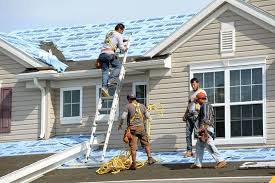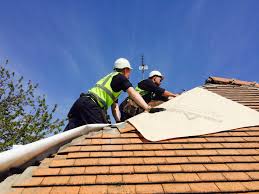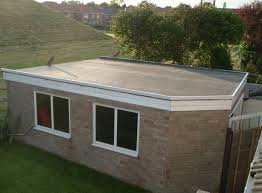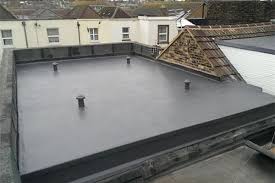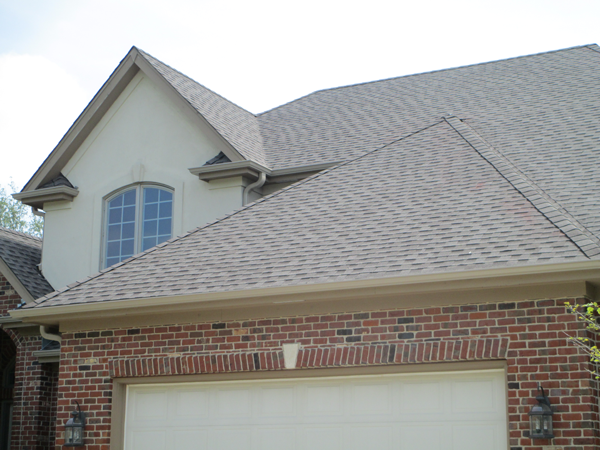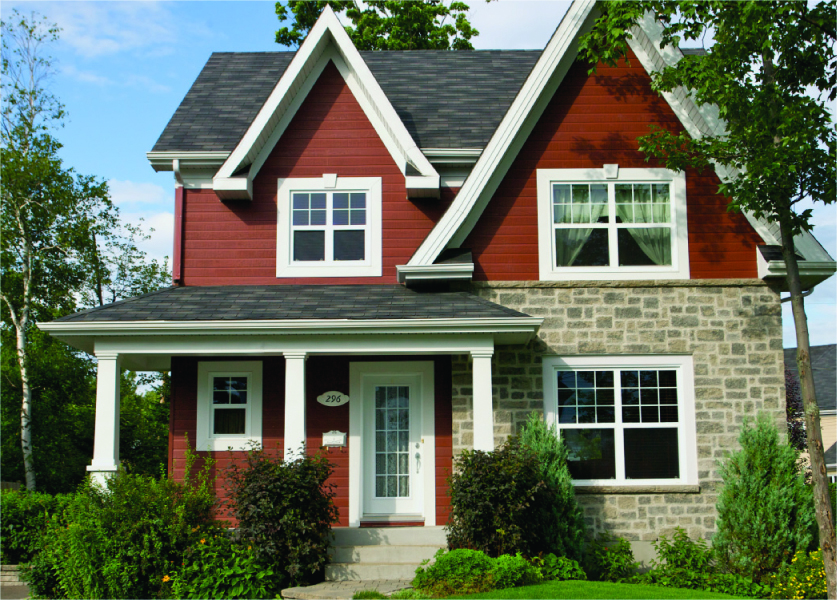The Most Common Roofing Installation Errors
There are two big problems homeowners face when it comes to assessing the quality of craftsmanship invested in their roof. Firstly, they tend to trust that the company they hire knows what it’s doing. Secondly, it’s not exactly easy to get up there with a magnifying glass once the job is done. As such, good faith is often misplaced, and a roof’s inaccessibility means problems go unnoticed.
In many cases a first-rate roofing job is solely the roofer’s responsibility. Unfortunately, it’s all too common that the only thing they’re responsible for is more problems down the line. I’ve assembled a list of the most common installation errors to help you spot them from the beginning.
They ignored ice dams in gutters
Caused by backed-up ice in gutters, ice dams can cause more problems. Overspill becomes icicles, which pose a danger to anyone beneath them, and the weight of trapped ice can pull gutters away from a roof entirely. Not least of the risks is when freezing water starts to seep through cracks in the roof – or even cause them – entering your home and leading to moisture, mold and other damage.
Defending roofs against ice dams is a simple matter of adding insulating layers that cover enough of the roof’s gutter-adjacent underside, yet it’s a common-sense step roofers frequently forget. A few feet of extra insulation are typically enough to absorb any water trying to get through. My previous blog goes in-depth on how homeowners can cold-proof their gutters, and I recommend doing this well before winter hits.
They just didn’t nail it
There’s a reason why “nailing” a job means getting it done right. There’s a minimum number of nails required to firmly secure shingles to roofs, and that number goes up depending on the steepness of the gradient. It’s some simple physics a lot of roofers don’t calculate correctly.
Industrial Roof Installation
Turnkey Industrial Care
Industrial roofing requires a different level of attention than a conventional commercial system. When it comes to industrial properties, we understand that we’re sometimes dealing with toxic exhaust systems. Before every installation, we sit and speak with the building owner. This gives us the chance to analyze the surface as well as determine what solutions are most appropriate for the building.
It doesn’t matter if it’s a new installation or a re-roofing service – whatever project is undertaken, we’ll make sure that every matter is treated with immense care. At CIS, we’ll deliver a one-of-kind solution that extends the lifespan of your roofing system for many years to come.
Set Up an Inspection Today
Our professional staff prides ourselves on being the leading source for industrial roofing installation services. Before we install the system, we always examine things with from a close view. During our analysis, we will determine what products will work best for your unique situation. Whether it’s commercial or industrial care, we’re prepared to handle every task your industrial roof needs

Slate Roof Installation: Things You Should Know
Slate is one of the most durable and long-lasting roofing materials you can find. With proper care, a slate roof can last over 100 years, meaning you’ll never need to worry about roof replacement again
Underlayment
The most appropriate type of underlayment for slate roofing is the traditional, 30-pound organic roofing felt. Its main function is to protect your home in case there is a storm prior to the installation of slate. It’s important to note that slate itself is capable of shedding water and protecting your home. So an underlayment such as an ice and water guard is usually unnecessary for slate roofing.
Sheathing
Sheathing, or decking, is the wood attached to the slate. On average, it can last for 150 years, provided that the right type of material is used. Plywood, particle wood and laminated wood aren’t recommended since they are made with glue.
Nails
If you want to avoid roof repair, you should pay special attention to the nails that are used in the installation. Do not use electro-galvanized nails because they can become rusty in just a couple of years. Your best options are copper, stainless steel or hot-dipped galvanized steel nails.
Sidelap and Headlap
Slate tiles should have at least a three-inch overlap on the sides, called sidelap. Each slate tile should also have an overlap at its top, called headlap. For steep roofs, three inches of headlap are required.
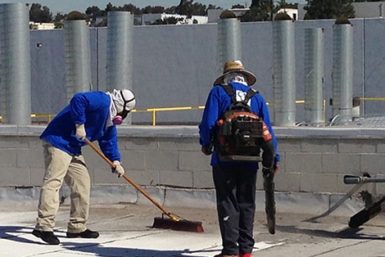
Tips To Get Ready For A Stress-free And Smooth Residential Roof Installation
Plan For Your Kids And Pets.
Loud noises are common to face when installation or Roofing Repair Phoenix activity is under process. It will increase the level of anxiety and may even disturb sleeping habits for young kids and your pets. It’s better to watch such activity from a safe distance and work zones turn completely unsafe for pets and kids. Either shift them to relative’s house or stay with them constantly to make them feel comfortable.
Relocation Of The Vehicles
There will be many instruments heavy and light which will be used by the roofing contractor and you need to offer then parking space keeping them. Roofing repair and maintenance or installation Contractors seek quick access to make prompt use of tools and trucks across the day. Need to offer a dedicated place to accumulate shingles and roof debris. You should remove your car or other vehicles from the parking area and keep at a safe distance or in front of your neighbor’s house. Don’t forget to take your neighbor’s permission for the same.
Takedown All Wall Arts
When it’s a roof installation process or even repair one, facing jerks and vibrations are very common to experience. Such vibrations will move through the walls and if you have decorative items hanging on the walls then it may fall and get damaged. So, take the initiative to put them down and store in a separate room till the time the work is over and you are back to normal life
Cover All Interior Items With Old Sheets
During a roof installation or repair process, numerous installers will move on your roof, hitting it with tools or hammers. It’s simple to understand that Dust and other small debris will fall on open spaces during the process. To keep your interior house belongings clean and free from dirt and debris cover them up using old sheets till the time the work is over. Light vacuuming will be needed in areas after the installation work is complete.
Cut Branches Of Trees And Grass Before Installation Of Roof
Do you have trees in your garden will tall branches that hang close to your roof? If yes, then get that trimmed before the installation contractor visit you to begin the work. This will help contractors to put drop cloths on the trimmed branches of plants and law grass in the premise of your home, to protect it from getting covered with debris. Having Short grass will make the process simple to clean the fallen debris and will make the clean-up process much faster than expected.

How To Prepare For a New Roof Installation
How Do You Prepare for a New Roof?
Having the roof of your home replaced can be an exciting ordeal. The winter gave you grief. You’ve had leaks, damage, and all sorts of trouble, but now it’s finally time to resolve those issues. Spring is finally here in Maryland, and you can feel more comfortable with your new shingle roof. However, having the roof over your head peeled off and replaced can also be a bit worrying. How should you prepare? Are there any precautions you need to take for a new roof installation? Fear not. Charm City Roofing has you covered (pun intended.)
Give the roofer access to your roof.
It seems rather obvious, but your roofer is going to need to get on to your roof! Any professional roofing contractor will come prepared, but it’s always nice to arrive at a job without having to ask the homeowner to relocate things from the perimeter of the house
Installing a new roof is a big project and takes up a lot of space. A good roofer will set up tarps and other means of catching debris around the perimeter of your home. This saves a lot of time for the clean up process. To make sure that your outdoor items are safe, and that the roofers’ cleanup is as efficient as possible, clear your driveways, sidewalks, patios, and flower beds before the crew arrives. This means move your vehicles, remove children’s toys, outdoor furniture, grills, etc. away from the house.
Make Arrangements for Children and Pets
Don’t be mistaken, pets and young children aren’t in any inherent danger when you’re getting your roof replaced. However, pets that go to the bathroom outside and children that like to run around might feel a bit stir crazy during the process.
Protect Your Valuables that are in the Attic
Experienced and attentive roofers should always try to minimize their footprint from the job, but replacing a roof is inherently a pretty dusty, dirty job. If you keep antiques, valuables, or cherished items in storage in your attic, make sure that they’re covered and out of harm’s way.
